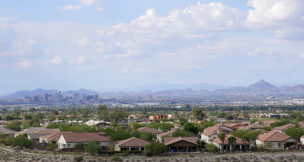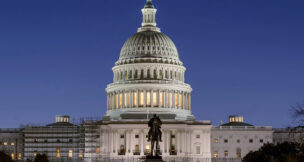Bringing Water to the South Rim
Common sense dictates that settlement near the south rim of the Grand Canyon should never have occurred, as the area lacks a permanent groundwater supply. As part of the Coconino Plateau, the rim slopes away from the canyon toward the southwest and precipitation drains away from the edge of the gorge. Yet the mystique and splendor of the Grand Canyon have always drawn adventurers and the curious, [...]
The Power Shootout
The Power family — Thomas Jefferson Power Sr., sons Charlie, John, Tom Jr., and daughter Ola May settled in Kielburg Canyon deep in the Galiuro Mountains of Graham County in 1907. The men ranched, but also gained a controlling interest in a mining claim variously known as the Jinx Mine, the Abandoned Claims and the Power Mine.
Healer of the Lonely Dell
On Christmas Day in 1871, Emma Batchelor Lee, her soon-to-be infamous husband, and six young children arrived at a desolate location next to the Colorado River in between Grand and Glen canyons that would become their new home. She originally called the site ‘Lonely Dell,’ but the area would become better known as Lee’s Ferry.
Frank Holme at the Schorgl Ranch
The Schorgl Ranch was one of a number of camps for tuberculars (commonly called “lungers’ camps”) built in the Arizona desert around the turn of the century. Because tuberculosis was highly contagious, healthy people feared infection and segregated the invalids on the outskirts of town. The tuberculars lived in tents because it was cheap, and they couldn’t afford medical care in the local [...]
Escaping from the Phoenix Indian School
Anglos moving into the Arizona Territory during the late 1800s believed that the Native Americans already there should be acclimated into Anglo culture. During that time, Indian boarding schools were built and native children were removed from their homes and placed into these schools. For one Hopi, however, going to the Phoenix Indian School was a choice he made reluctantly out of respect for his[...]
Phoenix Streetcars
In the late 19th century, just about every city of any size had a streetcar or trolley line. In Phoenix, there was the Phoenix Street Railway System, which operated from 1887 to 1948. It was owned and operated by the great promoter and subdivision mogul, Moses H. Sherman, until 1925, when the city of Phoenix took over operations.
Percival Lowell: Stargazer
The man at the eyepiece of the telescope is Percival Lowell, early day astronomer and founder of Flagstaff’s Lowell Observatory. He spent the better part of a lifetime probing the solar system — gazing into the lens of this Clark 24-inch refractor telescope (now a registered national historic landmark) from atop Mars Hill in Flagstaff.
Thomas Farish: State Historian
Unlike today, where the state historian is an honorary position created by a governor’s proclamation, in late territorial and early statehood days, this was an official, paid government position.
Another Time, Another Babbitt
This is State Sen. James E. Babbitt, member of the pioneer northern Arizona family and uncle of former governor and former Secretary of the Interior, Bruce Babbitt.
A Fire in their eyes: Aldo Leopold’s Arizona
Forester Aldo Leopold’s presence in the Southwest is well-documented and his status as a steward of nature continues to grow. His time in Arizona helped hone his values which are still respected and discussed today.
Nathaniel Plumer and Tucson’s Speedway Boulevard
Nathaniel E. Plumer, along with two business associates, was instrumental in getting the road built that would eventually be known as Speedway Boulevard.
Kaibab Plateau – The Waterless Mountain
The road from Jacob Lake to the North Rim of the Grand Canyon is a lovely journey through grassy parks surrounded by spruce and fir trees at a an altitude of more than 8,000 feet. The pleasant coolness refreshes after travelling through the beautiful, yet harsh, high desert of the Vermillion Cliffs and House Rock Valley. The lack of streams and lakes on the plateau has limited human settlement the[...]






